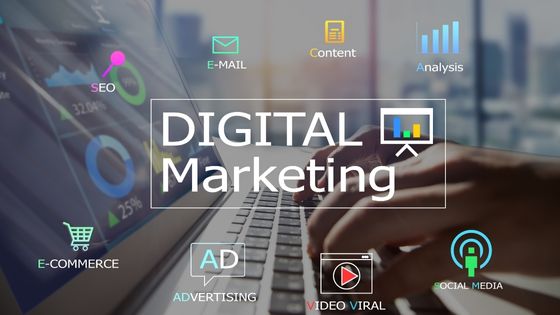With over 60% of the world’s population using the internet (the numbers continue to grow, too), it’s no surprise that businesses everywhere prioritize their online presence. Being visible on the internet puts a business within reach of a wide audience, which is why digital marketing has become a mandatory part of any enterprise’s strategy. Some say it is just a fad, but it has proven to be one of the most effective forms of marketing to date.


What is Digital Marketing?
Digital marketing (aka online marketing) is the use of the internet and digital devices to promote products and services. It predominantly uses online marketing tools such as websites, social media platforms, mobile apps, email, and content (blogs, videos, etc.). You see digital marketing in various forms every day — YouTube ads, TikTok videos, Instagram reels, and email blasts.
What makes digital marketing so effective is that it allows a business, big or small, to reach its target audience in a manner that is cost-effective, measurable, and scalable. With internet access growing worldwide, your reach is not limited within town; we are talking about a global audience here!
So how does digital marketing work? Well, it comprises different categories. Let’s have a glimpse of how they work and how they all contribute to a company’s overall marketing strategy.
1. Search Engine Optimization (SEO)
Whenever people need to know or buy something, they look it up on a search engine (like Google and Bing). Most likely, they will find what they are looking for within the first two or three pages of the search results. The more visible your business website is, the higher your chances of engagement or conversion. To increase your visibility in the search results, search engine optimization is the key.
SEO is directing traffic to a website or a piece of content via search results in search engines. It aims to improve your page’s ranking in search result pages. SEO involves several processes.
- Keyword research — identifying the keywords that most people input in search engines
- Creating relevant content — publishing content that resonates with the target audience and contains targeted keywords
- Onsite SEO — customizing a page’s meta tags, content body, and internal links to improve search rankings
- Technical SEO — optimizing the technical aspects of your site to allow search engines to crawl and index your site correctly
- Link building — placing links on other websites that lead to your own
2. Social Media Marketing
Social media platforms have become essential marketing channels for businesses. These networks have large user bases, and people also spend a significant time on them (reports say that the average is 2 hours a day). Your promotional posts on social media have very high chances of visibility and engagement. Here are some of the popular methods involved in social media marketing.
- Social commerce — shopping and checkout can be facilitated within the social platform
- Influencer marketing — having influencers endorse and promote your products through their own social media accounts
- Paid advertising — displaying advertisements to targeted audiences on social media
- Content creation — producing quality content (posts, photos, vlogs, etc.) that appeal to your audience or help them with their problems
- Community management — creating online communities or groups for people with common interests, particularly those that are directly related to your industry
3. Content Marketing
Social media and content marketing are closely related. The difference is that content in social media are tailored to fit the rules and context of the platform. For instance, tweets on Twitter are limited to 280 characters at a time only.
With content marketing, you are not bound by the limitations of social media platforms. You can use your own website or third-party sites to publish long-form or free-form content. Examples are blog posts, instructional videos, and e-books.
This form of marketing works by giving people valuable information or solutions to their problems, which also establishes your business’ credibility. Demand for your services can be generated because of your interesting content.
4. Affiliate Marketing
Affiliate marketing involves paying another website or business a commission for generating sales or website traffic for you. Remember when you read a review on a mobile phone and it contains a link to a dealer? Yes, that could be an example.
This strategy is a cost-effective one, as you will only compensate the referrer after the sale or site visit has been made, unlike other marketing methods that may require upfront payments or investments. Many big-name brands have affiliate programs for qualified websites or content creators.
5. Email Marketing
Emails are among the oldest online marketing tools, but hey, they still work! Sending them is a great way to inform customers about your latest products or special offers. Statistics say that nearly all email users check their inboxes every day (thanks to smartphones!). This means that your messages have good chances of getting noticed and responded to.
The great news with digital marketing is that you don’t need a master’s degree in marketing to apply it to your business. There are lots of online marketing tools available that can help you with your marketing campaigns. You can also enlist the services of a digital marketing professional or agency to help plan and execute your strategies.








